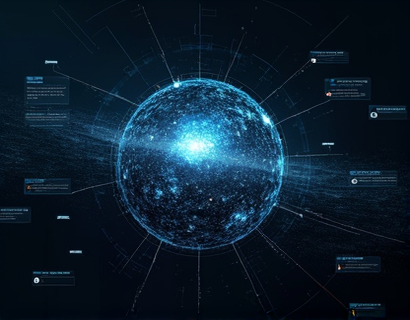Unlocking the Power of AI-Driven Calculus Insights for Students and Educators
In the realm of higher mathematics, calculus stands as a pivotal subject, bridging the gap between basic algebra and advanced mathematical concepts. For students and educators, mastering calculus is not just about solving equations but understanding the intricate relationships and applications that permeate various fields such as physics, engineering, and economics. However, the complexity of calculus often poses significant challenges. This is where AI-driven insights come into play, offering a revolutionary approach to learning and teaching calculus. This article delves into the specialized knowledge and tools available through an AI-driven chat interface, designed to enhance the calculus learning experience for students and educators alike.
AI-Driven Chat Interface: A New Paradigm in Calculus Education
The integration of artificial intelligence in education has opened new avenues for personalized learning. An AI-driven chat interface tailored for calculus provides a dynamic and interactive platform where users can engage with specialized knowledge in real-time. This interface is not just a tool for answering questions but a comprehensive resource that adapts to the user's level of understanding, providing explanations, examples, and practice problems tailored to their needs.
The chat interface operates on a sophisticated algorithm that understands the nuances of calculus, from basic derivatives and integrals to advanced topics like differential equations and multivariable calculus. By leveraging natural language processing, the system can interpret user queries and provide accurate, step-by-step solutions. This ensures that students and educators receive precise and verified information, enhancing the learning process and building confidence in their understanding of calculus concepts.
Enhancing Understanding Through Interactive Learning
One of the most significant advantages of an AI-driven calculus chat interface is its ability to facilitate interactive learning. Traditional textbook methods often fall short in explaining complex concepts, leaving students confused and disengaged. The chat interface, however, offers a conversational approach that breaks down barriers and makes learning more accessible.
For instance, a student struggling with the concept of implicit differentiation can ask the chat for a detailed explanation, and the system will respond with a clear, step-by-step breakdown. The chat can also provide visual aids, such as graphs and animations, to illustrate the process, making abstract concepts more concrete. This interactive approach not only aids in immediate problem-solving but also helps in building a deeper understanding of the subject matter.
Personalized Learning Paths
The AI-driven chat interface goes beyond providing static information. It uses machine learning algorithms to analyze user interactions and tailor the learning experience to individual needs. For example, if a student frequently asks for help with a particular topic, the system can identify this pattern and offer additional resources or practice problems focused on that area. This personalized approach ensures that each user receives the support they need to progress at their own pace.
Educators can also benefit from this personalized aspect. By monitoring the questions and topics students are engaging with, teachers can gain insights into areas where their students may be struggling. This information can be used to adjust lesson plans and provide targeted interventions, ensuring that no student is left behind.
Verified and Accurate Information
Accuracy is paramount in mathematics, and the AI-driven chat interface prioritizes this by ensuring all information is verified and up-to-date. The system is designed to cross-reference answers with a vast database of mathematical resources, including academic papers, textbooks, and established educational platforms. This multi-layered verification process minimizes the risk of providing incorrect information, which is crucial in a subject where small errors can lead to significant misunderstandings.
Moreover, the chat interface can cite sources for the information provided, allowing users to delve deeper into the topics that interest them. This transparency not only builds trust but also encourages users to explore the broader context of calculus, fostering a more comprehensive understanding of the subject.
Child-Friendly Version for Young Minds
Recognizing the importance of early exposure to mathematics, the AI-driven chat interface includes a child-friendly version specifically designed for young learners. This version simplifies complex concepts into more digestible pieces, using age-appropriate language and examples. The interface is visually engaging, with colorful graphics and interactive elements that make learning calculus fun and accessible.
For young students, the chat can start with basic concepts like counting and simple addition, gradually introducing more advanced topics as the child progresses. The system can also adapt to the child's learning speed, providing additional support or challenges as needed. This gradual approach helps build a strong foundation in mathematics, reducing anxiety and fostering a positive attitude towards learning.
Supporting Educators in the Classroom
For educators, the AI-driven chat interface is an invaluable tool that can enhance their teaching methods and improve student outcomes. The platform offers a range of features designed to support teachers in various ways:
- Lesson Planning:The chat can suggest lesson plans based on the curriculum, including key concepts, practice problems, and assessment ideas. This helps teachers prepare comprehensive and engaging lessons.
- Real-Time Assistance:During class, teachers can use the chat to quickly address student questions or provide additional explanations. This is particularly useful for large classes where individual attention is limited.
- Progress Tracking:The system can track student progress and identify areas where students may be struggling. Teachers can use this data to provide targeted support and adjust their teaching strategies accordingly.
- Resource Sharing:The chat can recommend high-quality educational resources, such as videos, articles, and interactive tools, to supplement classroom instruction.
By integrating the AI-driven chat interface into their teaching toolkit, educators can create a more dynamic and effective learning environment. The chat serves as a constant resource, available to both teachers and students outside of regular class hours, ensuring that learning continues beyond the classroom walls.
Building a Community of Learners
The AI-driven chat interface not only provides individualized support but also fosters a sense of community among students and educators. Users can join discussion forums within the platform to ask questions, share insights, and collaborate on problems. This community aspect encourages peer learning and creates a supportive environment where students can learn from each other.
For educators, the community feature allows for professional development and collaboration. Teachers can share best practices, discuss challenging topics, and exchange resources, creating a network of support and innovation. This community-driven approach enhances the overall educational experience and promotes continuous improvement in teaching methods.
Overcoming Common Challenges in Calculus Education
One of the most significant challenges in calculus education is the steep learning curve associated with the subject. Many students find calculus intimidating due to its abstract nature and the volume of material to cover. The AI-driven chat interface addresses this by breaking down complex topics into manageable parts and providing step-by-step guidance.
Additionally, the chat can help overcome common misconceptions by offering clear explanations and correcting errors in real-time. This immediate feedback is crucial for reinforcing correct understanding and preventing the solidification of misunderstandings. For educators, the chat can serve as a diagnostic tool, helping identify common misconceptions and addressing them proactively in the classroom.
Future Prospects and Continuous Improvement
The field of AI in education is rapidly evolving, and the potential for AI-driven calculus insights is vast. Future developments may include more advanced predictive analytics to anticipate student needs, integration with virtual reality for immersive learning experiences, and enhanced natural language capabilities for even more intuitive interactions.
Continuous improvement is a core focus, with regular updates based on user feedback and the latest research in mathematics education. The goal is to create a platform that not only meets current educational needs but also adapts to future challenges and opportunities in the field of calculus and beyond.
In conclusion, the AI-driven chat interface represents a significant leap forward in calculus education, offering a powerful tool for students and educators to explore and master this complex subject. By providing accurate, personalized, and interactive learning experiences, the chat interface is poised to transform the way calculus is taught and learned, making it more accessible and engaging for all.









































